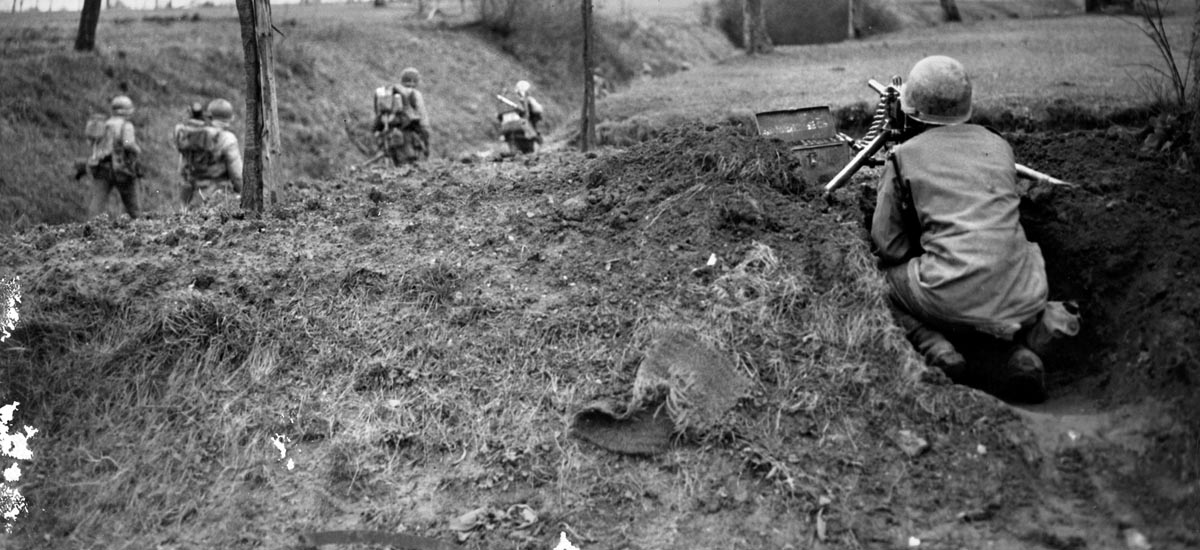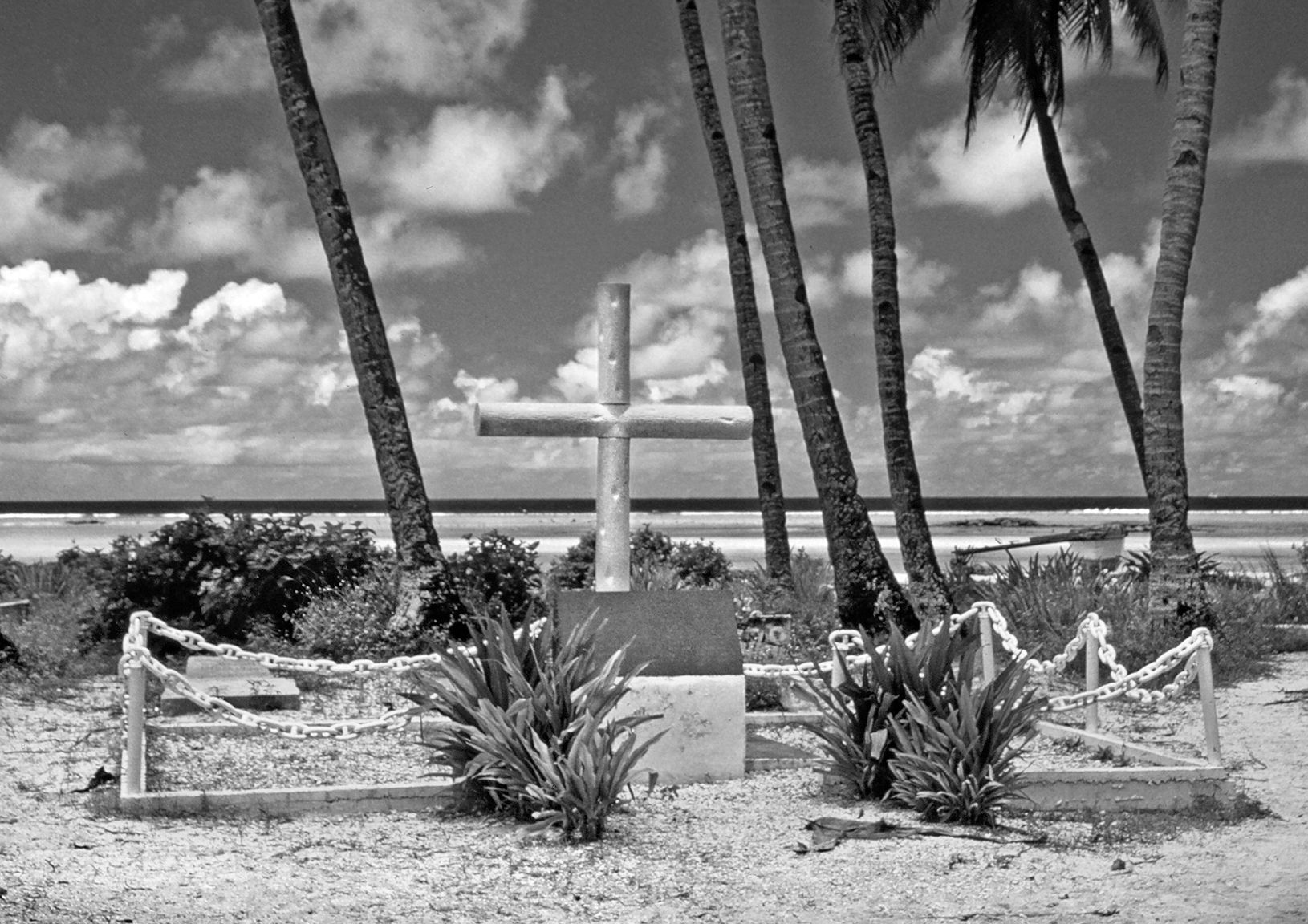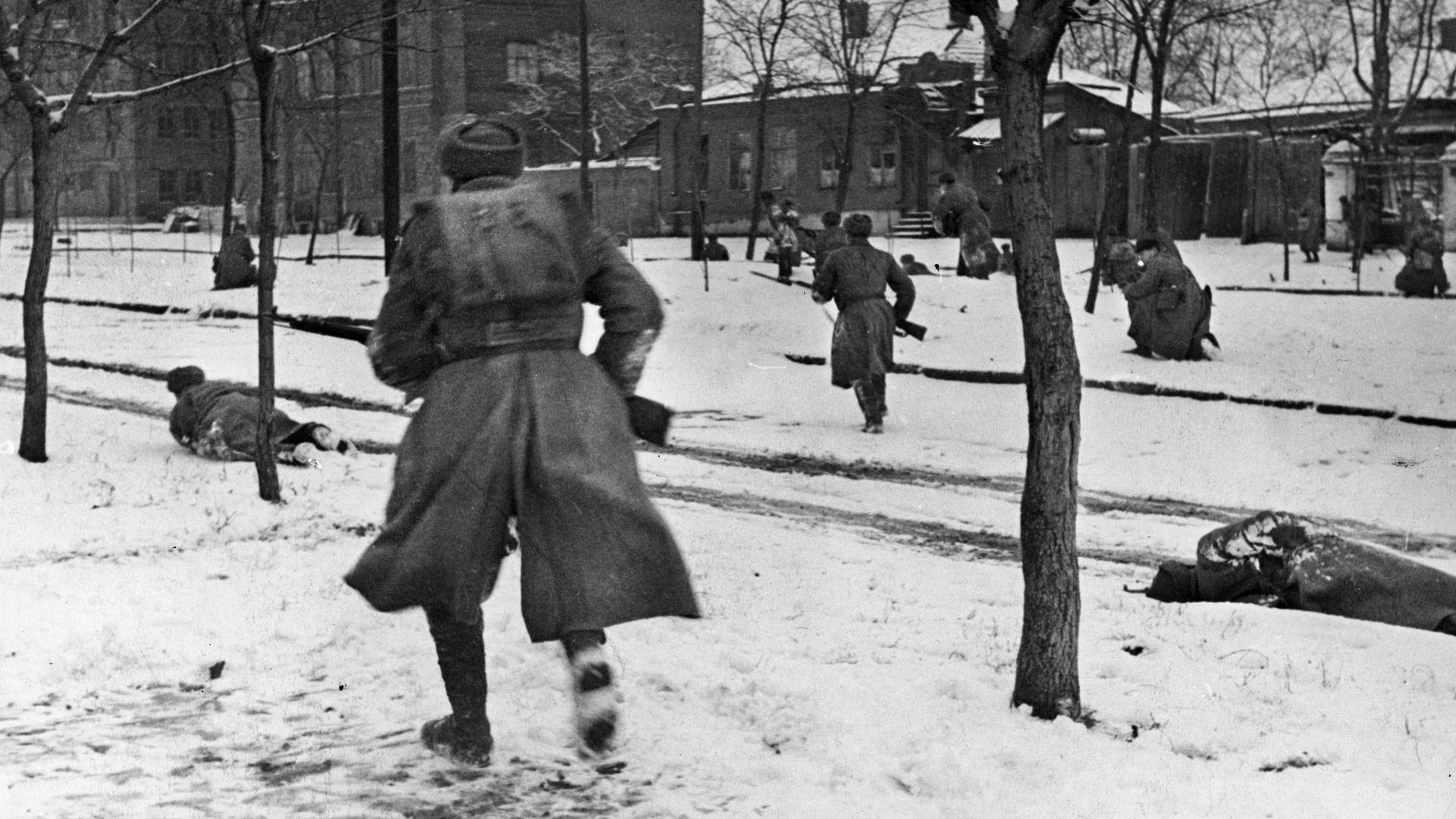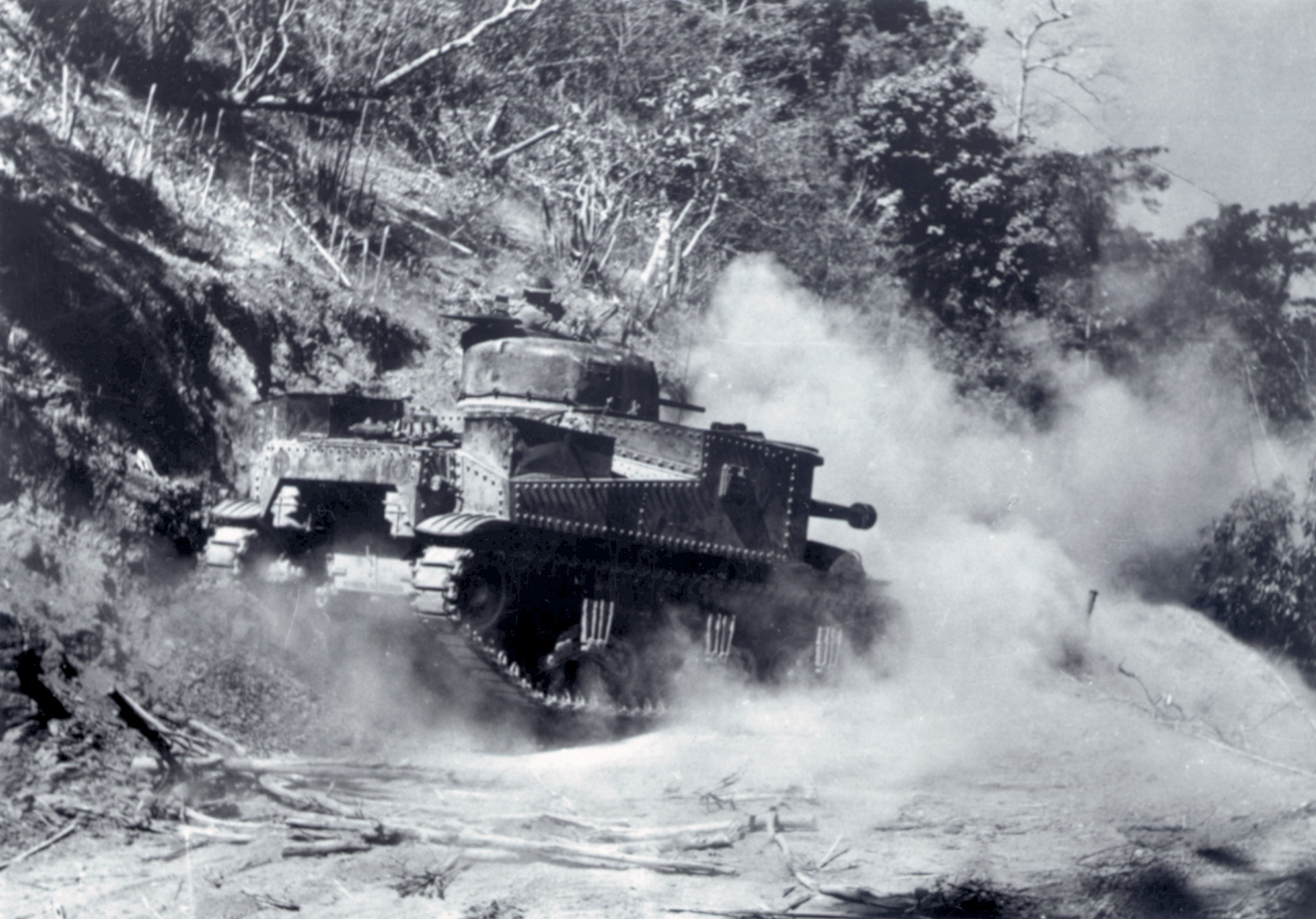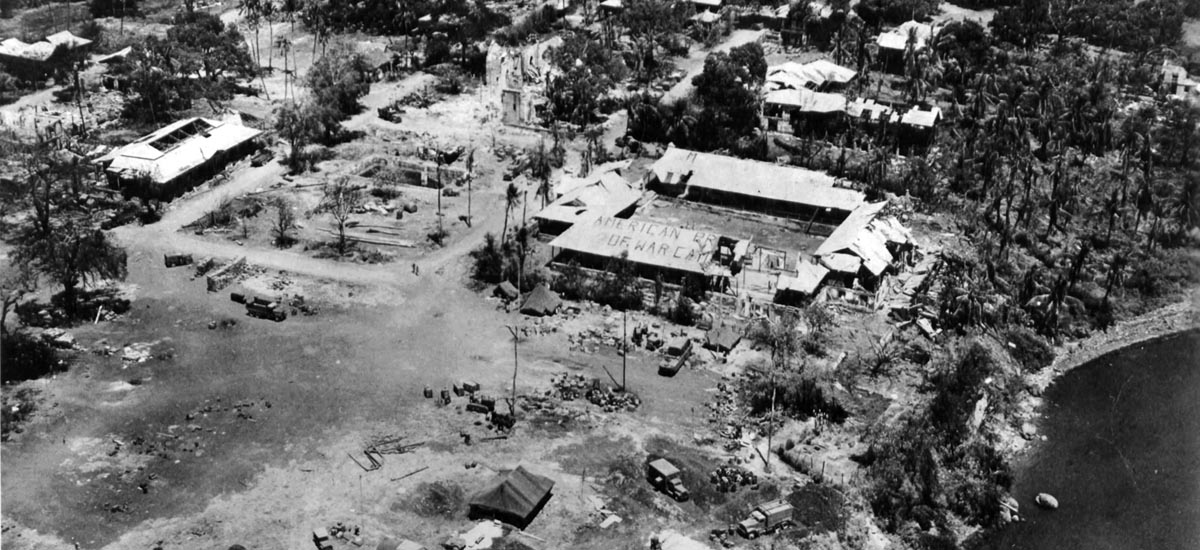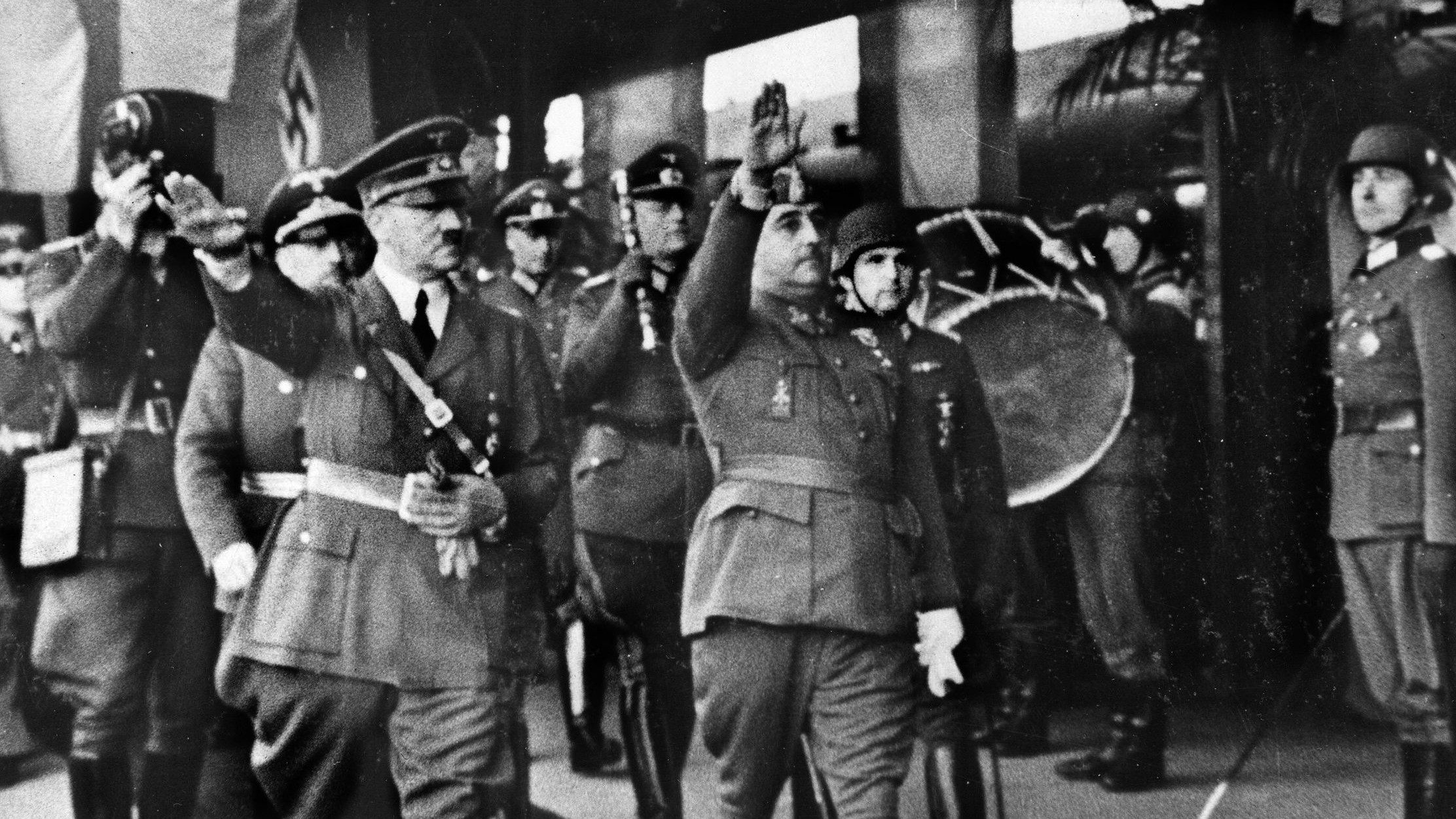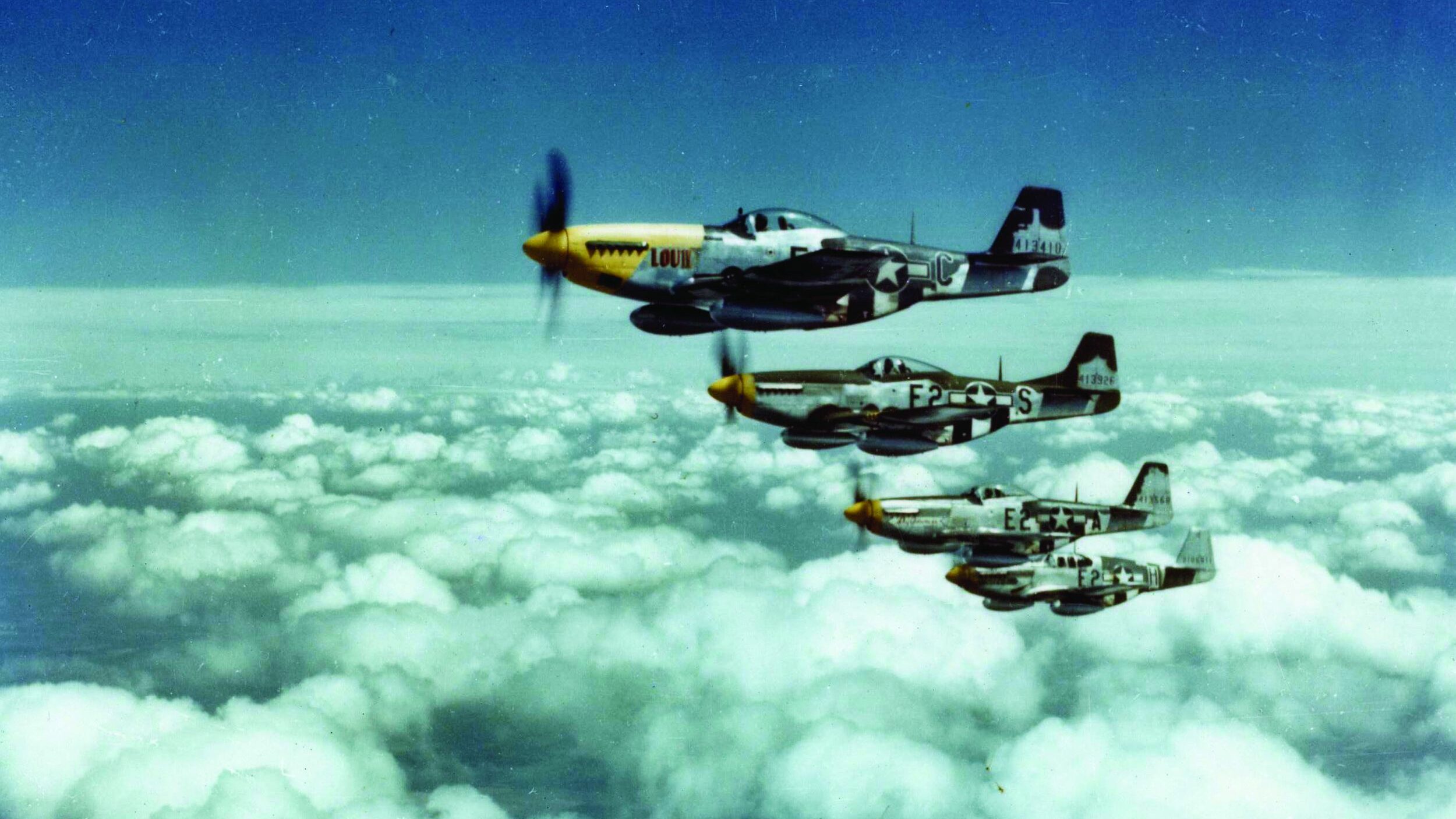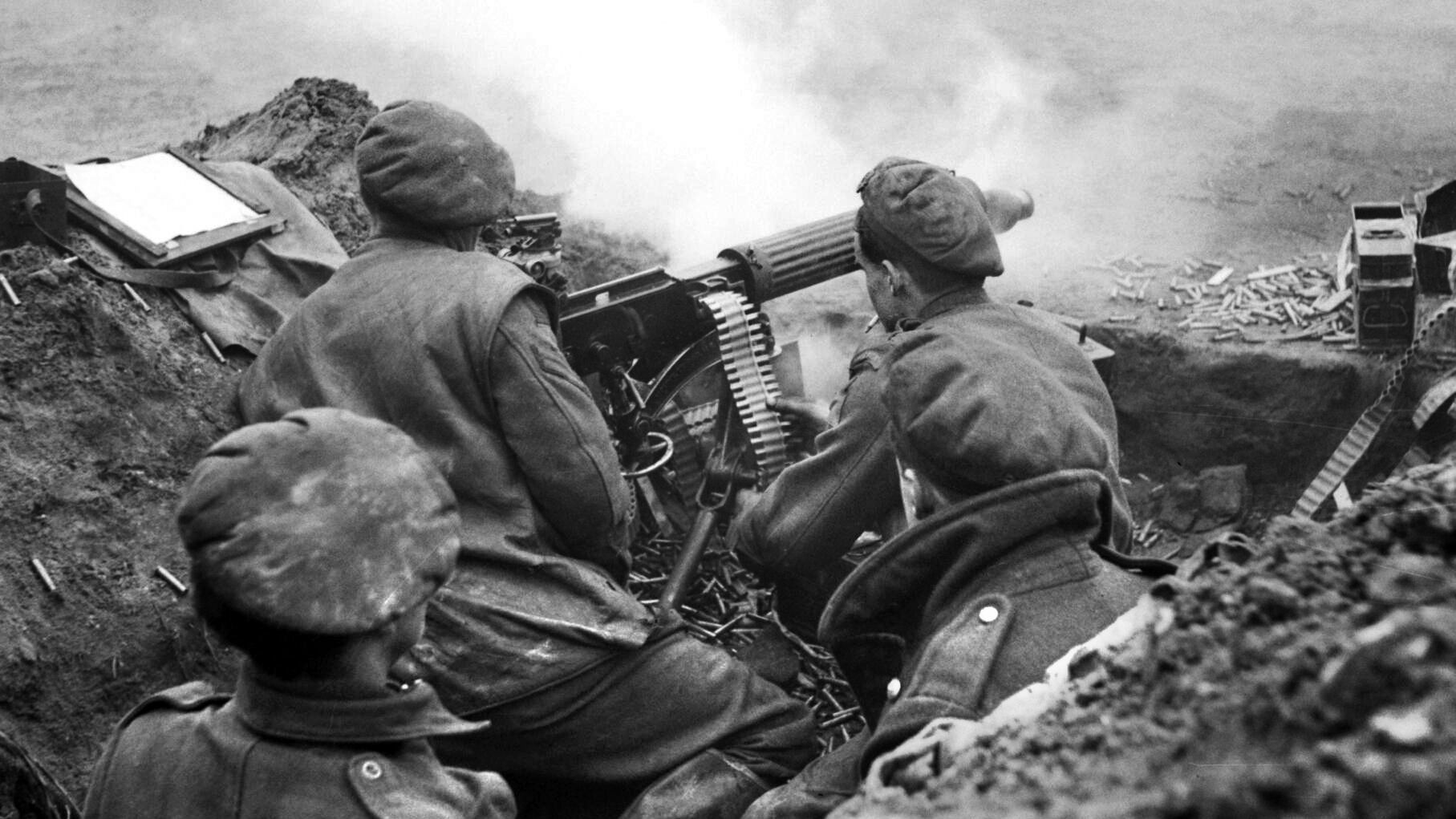By Thomas Harper Kelly
On the third anniversary of the attack on Pearl Harbor, men of the Powder Horn Regiment—the 100th Infantry Division’s 399th Infantry Regiment—were poised on the outskirts of the small Alsatian town of Lemberg, France in the northeast. The 100th Division was advancing through the Lower Vosges toward German positions around the Maginot Line fortifications at Bitche.
The soldiers of the 399th were the first of the 100th Infantry Division’s units to enter combat. They had relieved elements of the battle-weary 45th Infantry Division in the Vosges Mountains near St. Remy a month earlier.
Although formed in November 1942 at Fort Jackson, South Carolina (it also trained at Fort Bragg, North Carolina), the “Century Division” was not sent overseas until October 1944, arriving at Marseille, France, and assigned to Lt. Gen. Alexander Patch’s Seventh Army, which had been battling its way up the eastern border of France since landing along the Riviera (Operation Dragoon) on August 15, 1944.
In their first month of action, the 399th, along with the rest of the 100th Division, successfully breached the German winter line near Raon l’Etape and the Meurthe River, an action for which the regiment’s 1st Battalion would ultimately be awarded the Presidential Unit Citation.
Elery Zehner and the “Red Raiders”
The 1st Battalion’s commander, class of 1937 West Point graduate Lt. Col. Elery Zehner, had a reputation for aggressiveness and leading from the front. When the leading companies in the battalion’s first offensive action at St. Remy stalled under German artillery and machine-gun fire, Zehner marched over 400 yards of open ground to personally lead the advance into the town. His actions that day would earn him the Distinguished Service Cross.
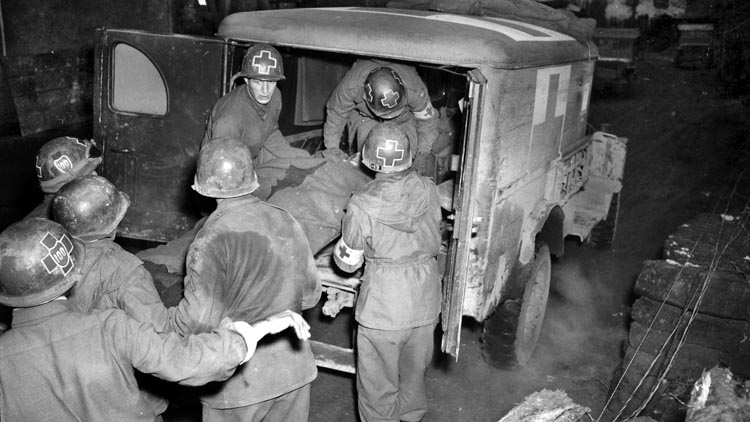
Zehner is also credited with originating a unique fashion trend in his battalion. He wore a red scarf, a style that dozens, if not hundreds, of men in his battalion would later emulate, and under Zehner’s leadership the 1st Battalion became known as the “Red Raiders.”
In early December, the 399th doggedly pursued retreating German units during its drive toward the fortress city of Bitche, which was ringed by Maginot Line fortifications and dominated by a citadel built by Louis XIV.
The 100th Division’s intelligence reports show that as Maj. Gen. Withers A. Burress, the 100th Division’s commanding general, and Colonel Andrew Tychsen, the commander of the 399th Infantry, discussed plans for attacking Lemberg, Burress remarked that while he did not want to be optimistic, he thought the town was “pretty well cleared out.”
Tychsen’s reconnaissance told him of several German positions in the hills to the east of the town, and when he informed Burress that the enemy was in Lemberg the night before the planned assault, Burress responded “We will shoot the hell out of them tonight and see if they are still there in the morning.”
Philippi’s Force Lies in Wait
What Burress and Tychsen did not know was that their adversary, Maj. Gen. Alfred Philippi, commander of the 361st Volksgrenadier Division, veteran of the Russian Front and recipient of the Knight’s Cross, correctly surmised that the American advance would proceed along the main road leading through Lemberg to Bitche and, consequently, he concentrated his forces there.
Philippi’s infantry units had been badly mauled in the preceding two months, and on the eve of the American attack on Lemberg he was forced to “comb out” his rear echelon in order to provide replacements for the 953rd Grenadier Regiment defending Lemberg. However, his units were still grossly undermanned. For example, the 2nd Battalion of the 953rd had only around 200 soldiers, not even a third of its strength according to the table of organization.
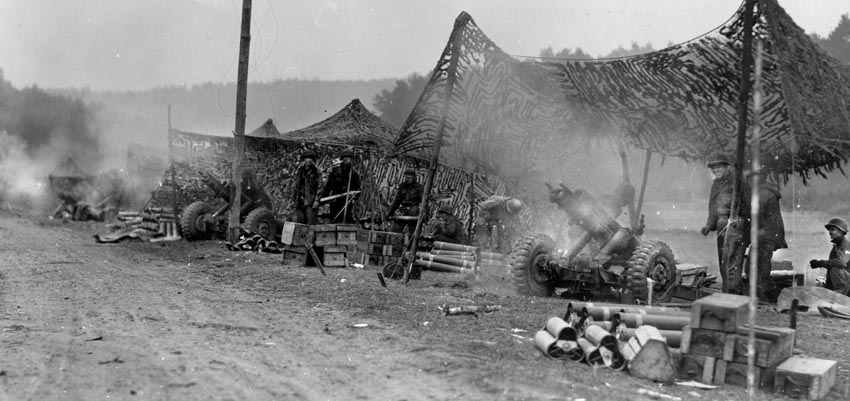
Philippi’s preparations were extensive. He blew a road bridge in the path of the American advance, mined roads and the forests around them, and assembled five antitank guns and four antiaircraft 20mm cannons. Philippi’s defense also included an antiaircraft flak battalion equipped with mobile flakwagens mounting 20mm cannons.
Tychsen’s plan was to use his 1st Battalion to attack on his left flank, cutting the Enchenberg-Lemberg road before proceeding over railway tracks and into the wooded high ground to the north and west of the town, while the 3rd Battalion advanced on the right flank cutting the Lemberg-Mouterhouse road before seizing several hills that bordered the town to the east. The attack was scheduled for 9:30 am, December 7, 1944, and would begin after a 20-minute artillery barrage.
Zehner’s Early Attack: The Assault on Lemberg, France Begins
The 1st Battalion had drawn the tougher assignment. Its route of advance was largely over open ground and its attack would be in broad daylight. The 3rd Battalion’s orders contained their own dangers, too, though. Tychsen had received reports that there was at least one pillbox and some armored forces protecting the road and hills in the path of the 3rd Battalion’s advance, and the steeply wooded hills would minimize or negate the amount of support the attached armored units could give to the attacking riflemen. Also, intermittent rain and snow nullified any impact American air power could lend to the American troops. If the Germans in Lemberg were determined to defend the town, it would be largely on their terms.
Major Zehner, leading the 1st Battalion, commenced his attack at 9 am, 30 minutes before the planned start time. For troops in his battalion, disaster struck immediately. Instead of the rolling artillery barrage that the soldiers had been expecting, Raymond Howarth, a mortarman in B Company, recalled that the “rolling barrage, to me, seemed to consist of just a few artillery rounds placed haphazardly.”
The soldiers in Howarth’s B Company, which would be advancing across barren farm fields, questioned the intelligence of their orders. One BAR-man, Manson Donaghey, recalled that the enlisted men around him thought the idea of crossing open fields in daylight was crazy, and that “before we stepped into that field, the guys were all looking at each other thinking, ‘We can’t go out there across that open field.’ The dumbest private there knew that was a stupid plan.”
An Advance Reminiscent of Pickett’s Charge
Rifleman Carl Fleck told his sergeant that “the whole deal of advancing in skirmish lines over open ground sounded as foolhardy as Pickett’s charge in Gettysburg.”
Even the company commander, West Point graduate Captain Altus E. Prince, also may have been critical of the proposed plan of attack. He is alleged to have told his first sergeant, “Nothing in training would justify sending our company across that open ground.”
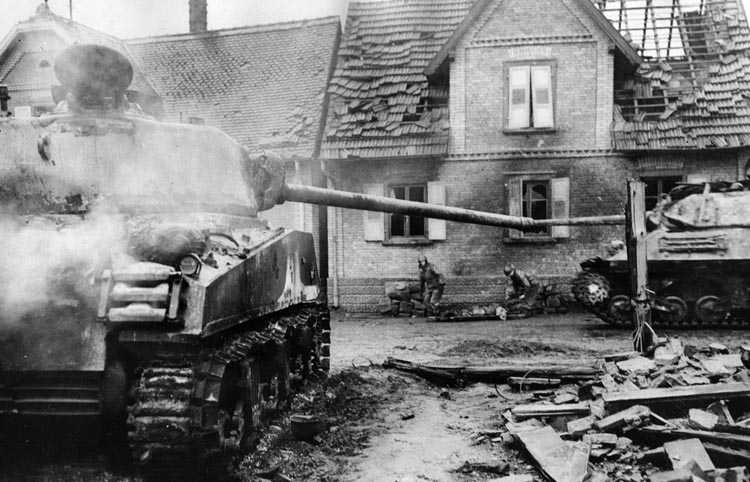
When B Company began its attack, leaving the protective cover of the tree line, the Germans waited until the leading platoons advanced approximately 200 yards and crossed the Enchenberg-Lemberg road before unleashing a fusillade of small-arms and artillery fire.
The soldiers already across the road were helplessly exposed to German fire, and casualties began to mount. Ray Howarth saw a man decapitated by a 20mm cannon shell and “could see men being hit all around me, and everyone seemed to be screaming.”
Those who could desperately tried to escape the maelstrom by running back over the road and taking cover in a shallow drainage ditch that provided some protection from small-arms fire. Even there, though, safety was not guaranteed. As Manson Donaghey lay in the ditch beside the Enchenberg-Lemberg road, two soldiers on one side of him were wounded, and Pfc. Daniel Hale, Donaghey’s ammunition bearer who lay on the other side a mere six feet away, was struck by fragments from a tree burst that killed him instantly.
While most soldiers did their best to dig into the frozen ground for protection, others aggressively engaged German gunners. Sergeant Charles Adamcek’s squad set up their light machine gun in the open and, despite being seriously wounded, Adamcek directed their fire, which knocked out a German flakwagen.
Ray Howarth’s Mortar Ingenuity
Ray Howarth ordered his squad to set up their 60mm mortar with the sight upside down so they could manipulate it from the prone position, and told them to use the crack of his buttocks as an ad hoc aiming stake. His squad immediately placed a 20mm cannon under fire and destroyed it on their second round. Howarth then systematically aligned himself with other targets as his squad rapidly fired their mortar. He believed that their continued firing knocked out a flakwagen, two German machine-gun positions, and reduced the amount of fire directed at his company.
Another B Company soldier, Pfc. Dick Jones, ran “with bullets whizzing by like a swarm of hornets” back across the Enchenberg-Lemberg road where his platoon and the company commander, Captain Altus Prince, were pinned down. After Jones strung field phone wire, Prince was able to regain contact with battalion headquarters and arrange for supporting artillery fire.
Charlie Company, which had been advancing on the right flank of B Company, was hit with the same barrage of fire as it moved into the open fields around Lemberg. Walter Bauer recalled, “You couldn’t do anything. You just had to lie there and take it and try to shrivel up and crawl into the earth when each shell whistled in.”
Charlie Company also hit back. Pfc. Richard Jackson displayed incredible bravery by leaving his sheltered position in the woods near the line of departure and, without orders, led his squad into the open fields where his men could fire at German positions. Despite the unrelenting German artillery and mortar fire, Jackson coolly operated his weapon and dropped 60mm mortar shells onto a German position firing at B Company.
Jackson’s accurate fire also allowed two of C Company’s platoons to advance, and GIs led by Sergeant Frank Rubino and Pfc. Donald Taylor managed to capture two 20mm guns that were battering their sister companies before being forced to retreat.
“A Sense of Security Is More Important Than Security”
Meanwhile, on the battalion’s left flank, A Company, which was largely shielded from German observation by trees, nevertheless began to suffer casualties after walking into the minefields set by Philippi’s Volksgrenadiers in the days preceding the attack.
Frank Gurley, a rifleman in A Company, remarked, “The ones who didn’t step on a mine got shrapnel” because the Germans had “laid traps and zeroed in with artillery and took a worse toll than a stubborn line of defense ever could have.”
David Parr, a radio operator who had been loaned to A Company from the 1st Battalion Headquarters, confessed, “I was never more scared in my life.” Under constant shellfire, Parr recalled that the noise was so great that “you could shriek your prayers and no one would hear you” and that “it was impossible to find a place to hide. The forest floor was all roots and stones. No place to dig in.”
Gurley and his buddy tried to dig a foxhole, but it quickly flooded; he concluded that “the joint was a reservoir covered with dirt and trees.” Instead, he built his foxhole vertically, using logs to assemble a rickety log cabin and philosophized, “Its value against incoming stuff was dubious but a sense of security is more important than security.”
Failed Attack by 1st Battalion
By noon, it was clear that the 1st Battalion’s attack had failed. Maj. Gen. Burress spoke by radio with Colonel Tychsen early in the afternoon and told him that he was concerned by the 399th’s lack of progress. Tychsen, either because he was unaware of how badly the attack was floundering, or to downplay the situation, told him that there were not “too many casualties,” and that he already was formulating a plan for a renewed assault in the morning.
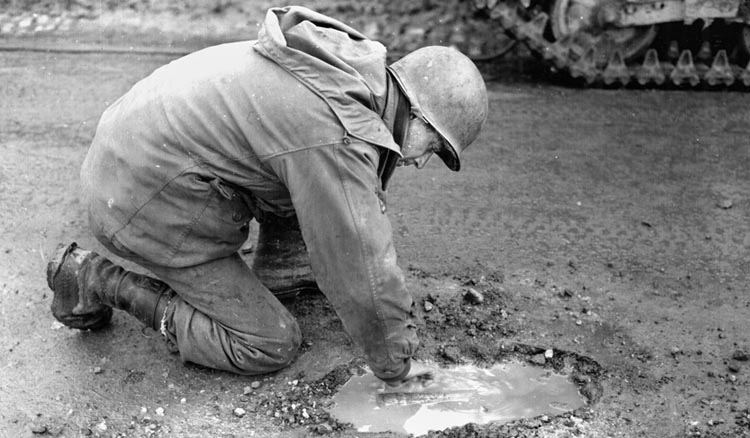
In the fields around Lemberg, France and in the town of Bitche, casualties were being collected and the outlook was not as optimistic. The wounded were not only exposed to German fire, but also a steady freezing rain. There was a shortage of stretcher-bearers, and the wounded were sometimes left unattended for hours.
Leon Wiskup, a machine gunner in A Company, was wounded by a land mine that almost severed his foot shortly after the attack began. After being treated by one of his company’s medics he was left wedged against a tree on the side of a hill and drifted in and out of consciousness for hours. As night fell, “I was freezing and the morphine was wearing off. I said, ‘Nobody’s going to hear me. I’m not going to cry or anything like that. I’m just going to die silently. Nobody’s going to hear me complain.’”
Then he heard footsteps in the snow, and an American voice swearing. Fortunately, a stretcher party had come nearby as Wiskup regained consciousness. He cried out, “I’m over here! I’m over here!” and the stretcher-bearers carried him to their jeep. Because of their exposed position, most of the soldiers in B Company could not withdraw until after dark. When they tried to get up and run back to the protection of the woods, they struggled to stand because their legs were numb from cold.
Roy Gray made his way to safety by “half crawling and stumbling, ramming my M1 [rifle] in the mud, all I saw was dead bodies.”
“Precious Little Rest” for 1st Battalion
The B Company history states that the company’s retreat was “a sorry spectacle, the living carrying the half-dead, the lesser-wounded struggling back with their more sorely wounded comrades, others dragging themselves out by sheer willpower, the dazed and half-crazed stumbling ahead of them leaving this hellish place. Prayers of thanks mingled with curses of hate.”
The total casualties for B Company that day were 17 dead and 34 wounded, but in testament to the horrors these men witnessed, 12 men were evacuated for exposure, shell shock, or nervous conditions.
In C Company, Walter Bauer had been sent to the battalion aid station after watching men blown apart by cannon shells and retreating to the wood line. But when Bauer got to the aid station and saw “all the guys from Charlie Company torn up and bloody, I figured there was nothing the matter with me,” so he returned to the line, only to find that his 40-man platoon was down to only eight men, the equivalent of an understrength squad.
As units tried to reorganize and assess their losses, more than one soldier believed that their companies had been annihilated. One company suffered a profoundly tragic loss. Chester Fraley, who had transferred from the 398th Infantry Regiment shortly before the division embarked for France to serve alongside his twin brother Lester in combat, searched the battlefield for Lester, from whom he had become separated during the day.
Their comrade, Robert Hogberg, heard Chester Fraley “calling for his brother Lester who had been killed in the area. His plaintive call was chilling and very sad, I’ll never forget it.” All night, the Germans continued to fire on the 1st Battalion’s positions. The regimental operations report noted, “There was precious little rest for the 1st Battallionites that night.”
Confusion in the Darkness
On the right flank of the American attack, the 3rd Battalion of the 399th was also running into stiff German resistance and was unable to relieve pressure on the 1st Battalion by outflanking Lemberg, France from the east. The attacking American companies were repeatedly pinned down in the ravines and on the hills that lay in the path of their advance. Even after calling in several tremendous artillery barrages, they were only able to make minimal advances. One of the attacking companies had 70 casualties.
As darkness fell, it was clear to Colonel Tychsen and the rest of the 399th regimental staff that the attacking companies had lost contact with their adjacent units and were in danger of firing on each other in the darkness. Also, the headquarters building was being targeted by German artillery observers. The German fire was so accurate that one shell, mercifully a dud, landed just outside the door of Tychsen’s headquarters.
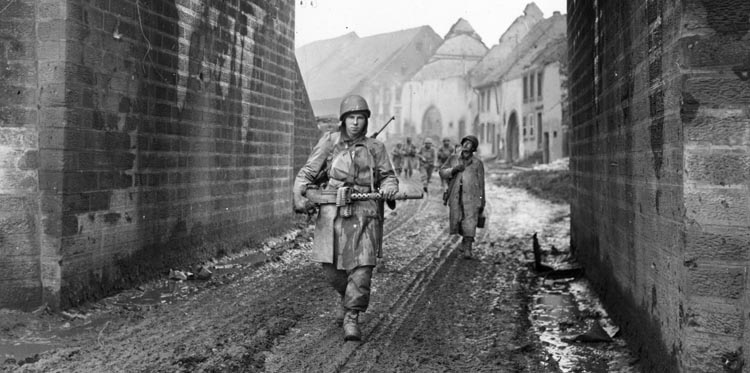
During the night of December 7, Colonel Tychsen retooled his original plan to capture Lemberg and called upon his 2nd Battalion, which had been in reserve, to move astride the 3rd Battalion and attempt a wider flanking assault of the hills stalling their advance and hopefully force the Germans to retreat out of Lemberg itself.
Major Zehner, commander of the 1st Battalion, stepped over the unexploded German artillery shell outside of the Tychsen’s headquarters and offered to continue his attack straight into Lemberg itself with some armor from the 781st Tank Battalion he had located. Tychsen, aware that Zehner’s rifle companies had been hit hard that day, and with tears in his eyes, replied gratefully, “Would you?”
Some Progress in the Hills
As dawn broke on December 8, it became apparent that the 1st Battalion was unable to immediately renew its attack. Frank Gurley remembered that as men from his company streamed back into Bitche that morning, “everyone looked like they had just gone through a wringer.”
During the day, the 1st Battalion remained in positions in and around Bitche. To one B Company survivor it looked as though the company had lost a third of its men. By contrast, C Company, which had only lost one man killed in action, had 27 men wounded.
In A Company, one platoon was down to 14 men, less than a quarter of its strength, and the prevailing opinion was that their company would not be committed again for another few days. As they dried their clothes and gorged themselves on C rations, the order came to “Get your stuff on, we’ve got to take Lemberg.”
The attack launched by the 2nd Battalion had succeeded in capturing a number of hills outside of the town, and elements of the 3rd Battalion were able to enter the outskirts of Lemberg itself. Zehner’s weary 1st Battalion was needed to help secure the southern reaches of the town.
At around 5 PM, Sherman medium tanks from the untested 781st Tank Battalion were rushed forward under a protective smoke screen, and despite having two tanks immediately disabled by mines, pushed into town, supported by the remnants of A and C Companies and fired point blank into at any house German soldiers fired from.
“Pigs, Give Up or Die!”
As night fell on December 8, Zehner’s men had a foothold in the town, but cohesion between the battalion’s weakened companies had all but disintegrated. In the dark, with the only light provided from burning houses, the companies could not coordinate their positions.
Frank Gurley from A Company heard someone approaching and assumed it was a soldier from C Company, which was supposed to be nearby, “I helpfully yelled ‘Who is it?’ The only answer I got was one word— ‘Vas?’ and even I know enough Deutsch to know that to be Kraut lyrics. I shut up.”
Mortarman Richard Jackson of C Company, who was experiencing urban combat for the first time, recalled, “To move into the blackness of cellars was scary. On top of that, the Lemberg residents were happy to hear GI voices, and they grabbed us in thanks” as the GIs tried to search their homes for German soldiers. After clearing a few houses, the men bedded down for the night, exhausted from their two-day ordeal.
Outside of town, the 2nd Battalion was bearing the brunt of a fierce counterattack spearheaded by Philippi’s flakwagens. In the predawn hours of December 9, German troops attacked F Company’s positions near a railroad cut east of the town. Screaming, “Pigs, give up or die!” German soldiers rushed the company’s positions.
Infantryman Hal Bingham of F Company recalled, “Those that could, ran from the deadly fire…. We had been exposed to the intense cold most of the night in our holes. Our limbs were numb, but we made them work like they had never worked before.”
When F Company returned to its original positions on December 10, they found the bodies of some of their men lying side by side, all with bullet holes in their heads and their arms tied behind them. One of the executed was a close friend of Hal Bingham, and, after seeing his dead buddy, Bingham “cried like a baby between hurling profanity at the Krauts…. I learned to ‘hate’ from that experience.”
Marching Over the First Day’s Battlefield
By the morning of December 9, Colonel Tychsen was fully aware of how badly his troops had suffered in taking Lemberg. Maj. Gen. Burress was ready to move fresh troops from the 398th Infantry into the town if necessary, but although Tychsen confessed that A, B, and I Companies were each “down to the size of a good-sized platoon,” he was confident that “we will have this place today.”
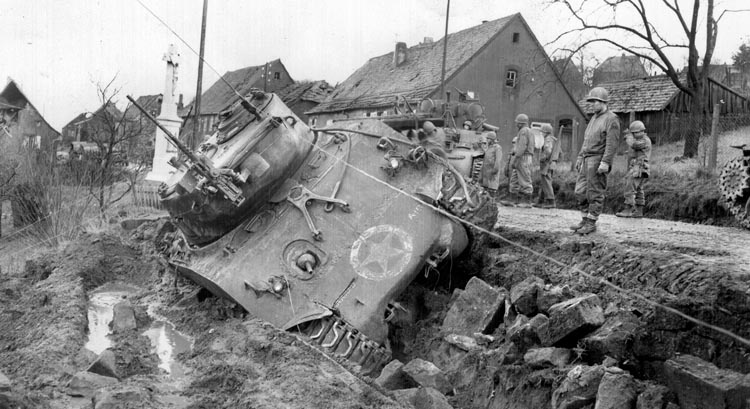
He pushed his weakened 1st Battalion, supported by Sherman tanks from the 781st Tank Battalion, which continued to fire point blank into enemy-held houses, to drive through the remainder of the town. As the American soldiers reached the outskirts of Lemberg, the enthusiastic tankers charged on and annihilated a German column that included three flakwagens, two 75mm field pieces, and two howitzers.
Tychsen’s prediction was correct: by 11:45 pm on December 9, Major Zehner, the 1st Battalion’s commander, radioed that Lemberg was completely occupied, with the exception of snipers “here and there.”
As the 1st Battalion was withdrawn from Lemberg and placed in reserve at Bitche, the weary soldiers—now veterans—marched over the first day’s battlefield. Frank Gurley recalled, “We saw the vast field of craters we had crossed two days before and couldn’t believe we had actually done it.”
A Success at Unsustainable Cost
The attack on Lemberg had been a success, but at a terrible and unsustainable cost. The first day of the attack was the bloodiest day of the war for the Red Raiders, and the brutality of the fighting overshadowed either side’s strategy.
The Germans defending the town had shown that, when possible, they could check the American advance for days at a time with relative ease. To an American survivor of the attack on Lemberg, the battle showed that not even the 1st Battalion’s courageous leader Major Zehner could “turn a clever enemy ambush into a glorious 1st [Battalion] victory.”
The 100th Infantry Division went on to distinguish itself in subsequent actions. It successfully held the line during the part of the Battle of the Bulge known as Operation Nordwind. On March 16, 1945, the citadel of Bitche fell to the men of the Century Division, and the American Army began moving into Germany. By the time the Germans surrendered on May 8, the 100th Division was positioned east of Stuttgart.
While spending 185 days in combat, the division suffered 916 killed in action, 3,656 wounded, 180 missing, and 491 listed as POWs. As the division’s historian wrote, “In liberating or capturing over 400 cities, towns and villages, they defeated major elements of eight German divisions. In this process, the men of the 100th inflicted untold casualties on the enemy, the only calculable number of which is the 13,351 enemy prisoners taken.”
